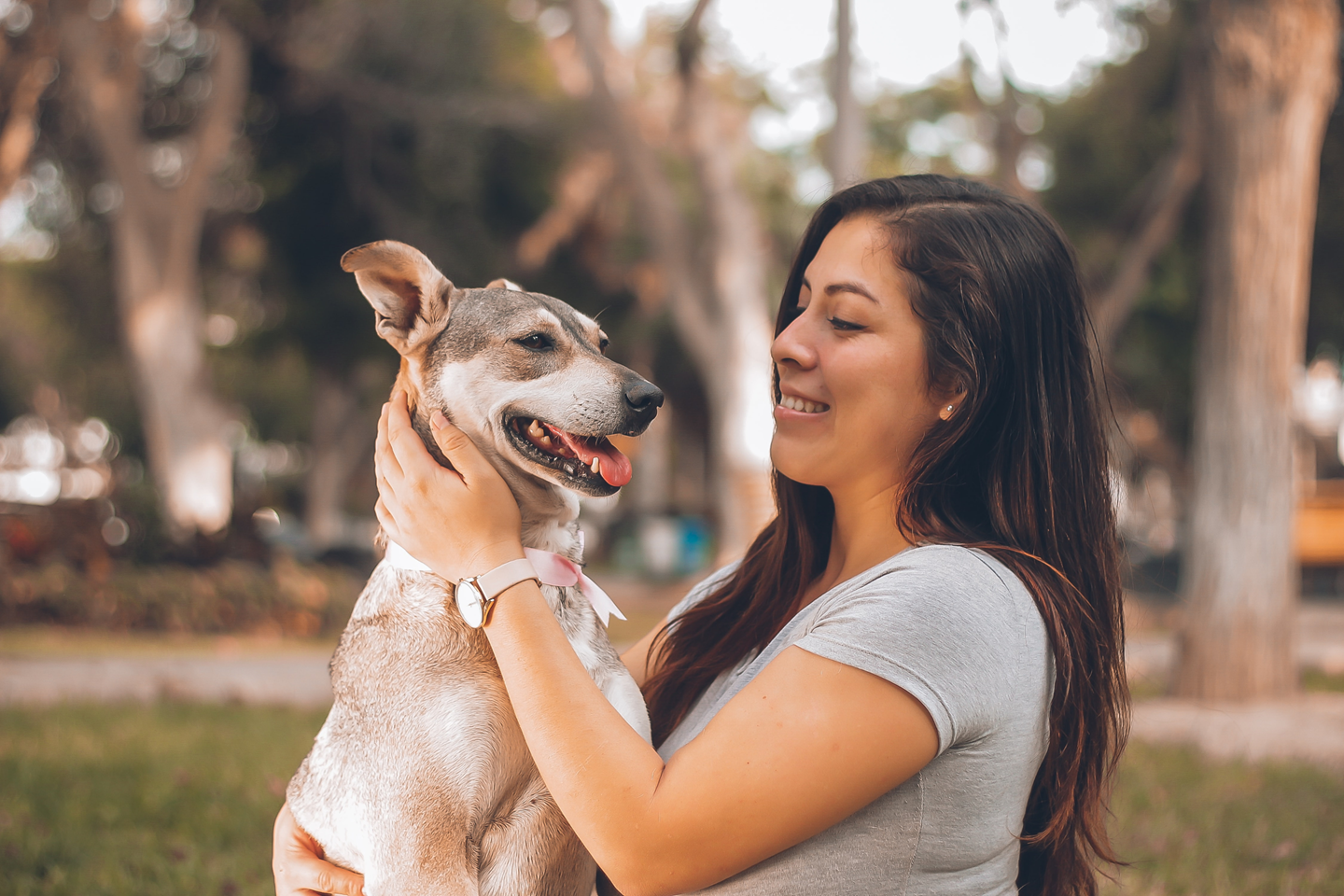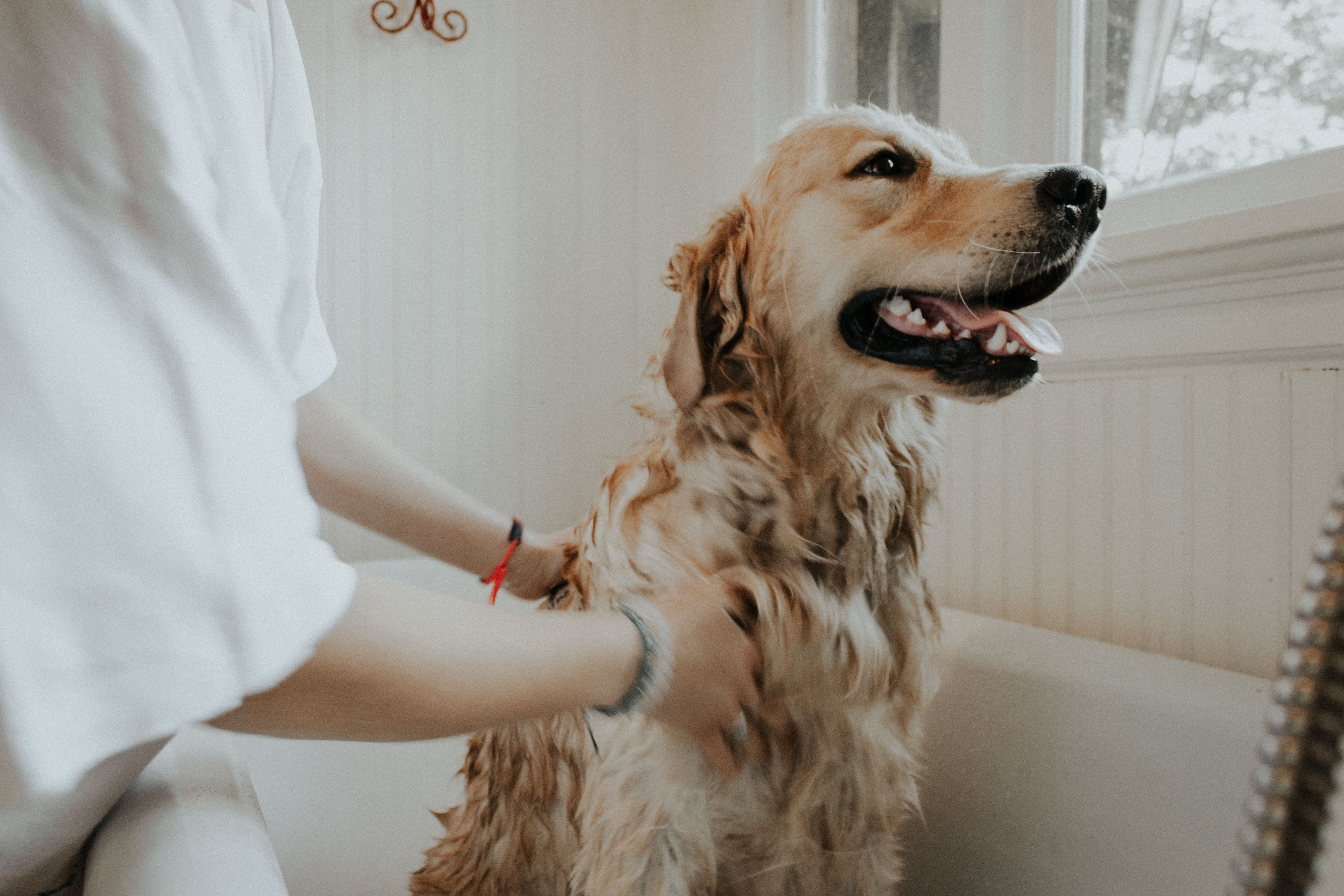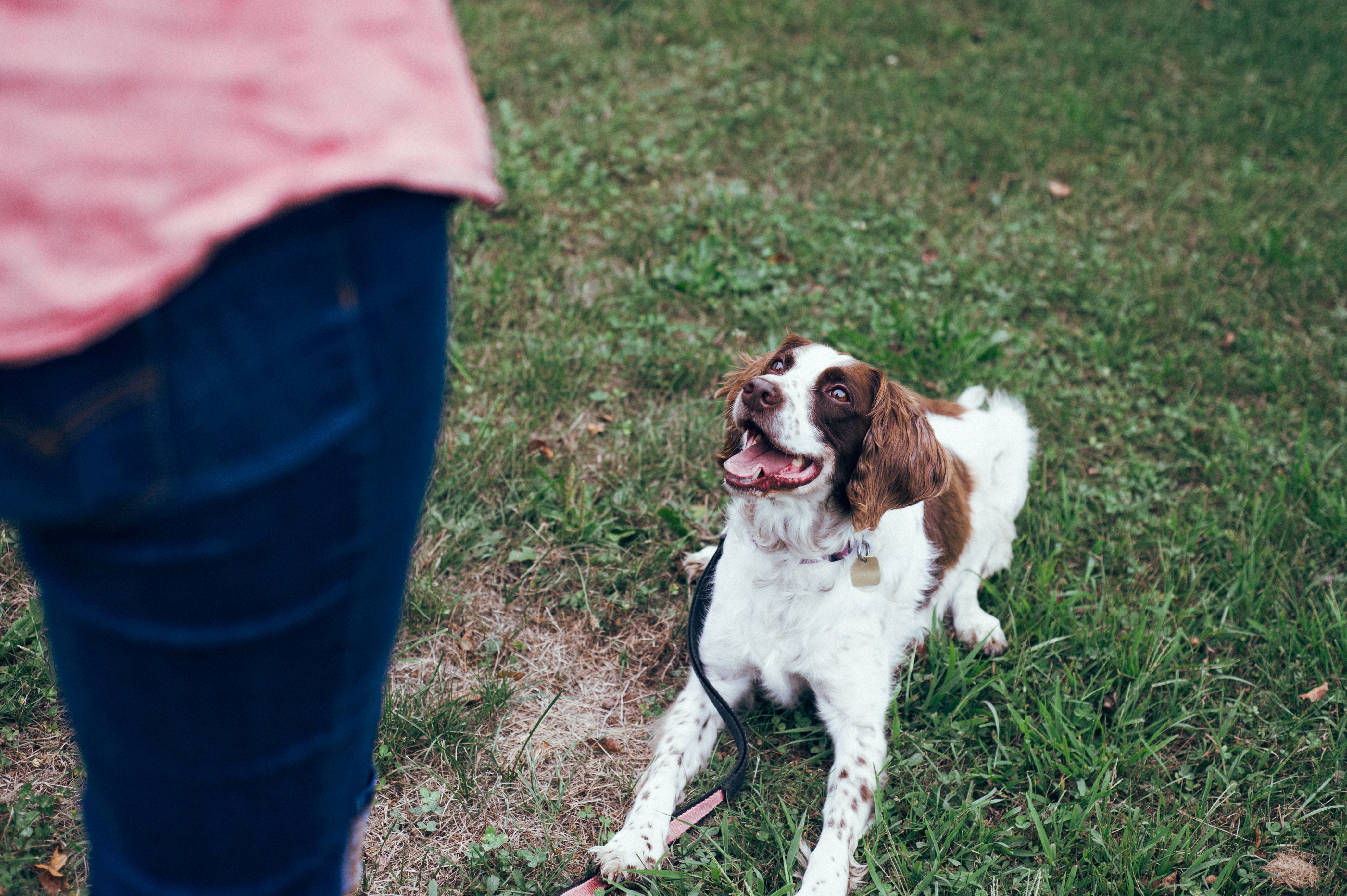
Category
Lifestyle
How to be a better pet owner
Posted by AMH Team
8m read time
Feb 2, 2022
Few things in life are better than snuggling up with a pet. To earn that level of trust, though, you have to properly prepare your home to ensure you’re taking care of them as best you can. Pet ownership duties start with pet-proofing your home and creating an inviting space for them, and continue throughout their diet, vet visits, and daily schedule. In celebration of National Responsible Pet Owners Month, here are a few ways to be a better pet owner this February.
Create a designated space for your pet
Pets tend to be calmer when they feel safe, so designate a spot that will serve as your pet’s “home base.” For a dog, that might look like a comfy bed with a cozy blanket and two or three chew toys. Cat owners might go for a scratching post and a ball and string.
Get creative and incorporate the pet area within the rest of the room’s décor. Look for matching colors or themes, and if that’s too much, a stylish storage basket will help keep things tidy while also blending in nicely with the room.
Of course, your pet may still decide to go adventuring somewhere else, or maybe their preferred spot is right next to you on the couch. But by giving them a safe, warm space where they can unwind and play with their favorite toys, you reduce the risk of chaos elsewhere in the house.
This is a great way to introduce your pet into a new environment, too. If you’ve recently adopted a pet or have only just moved into your home, they’ll need extra care and attention in their new digs. On top of slowly unveiling rooms in the house, consider pheromone sprays to make strange and unfamiliar environments feel more welcoming.

Pet-proof the house with durable materials
Most pet owners can overlook some of the destruction their beloved animals cause—after all, it just takes one bashful look to win back our hearts. Guests may not be so forgiving and, if you’re not careful, your home may quickly become worn down by excited or nervous pets.
To avoid this kind of scene, prepare your home for the running around, wrestling, scratching, and other pet behaviors that come from furry friends. If possible, set up your pet’s food and play areas in rooms with durable flooring, like luxury vinyl plank. Those surfaces are easier to clean and tend to be more stain resistant.
Additionally, consider things like furniture covers and pads under couch legs and throw rugs to ensure your pets aren’t slipping around and potentially knocking into other objects (and hurting themselves). You can take this route with toys, too—durable chew toys or bones tend to last longer.
If you keep a pet rabbit indoors, you may have to take this a few steps further to account for their natural tendency to chew and dig. Here’s a friendly guide to bunny-proof your home.
Keep your pets clean
Make sure you regularly wash and brush your pet’s fur, brush their teeth, and trim their nails (or take them to a pet salon or groomer). This will reduce the likelihood of excessive shedding, furballs, and other allergens building up in the house, keeping your air cleaner and smelling better.
While most cats use a litter box, they’ll avoid it if it’s not clean. Dogs sometimes have accidents in the house, too, even when they’re potty-trained. Those smells can ingrain themselves into carpet or rugs, so quickly clean up messes with water and odor removal products.
Don’t ignore outside of the house, either. Most pets love to play outdoors, no matter the season. Even if they don’t, dogs and some cats need to go outside to use the bathroom. And that means they’re prone to tracking dirt, dust, and grime with their paws and fur. Pick up droppings from the yard and keep an eye out for any anthills or other nature traps. You don’t want your pet accidentally bringing harmful things into the house.
Keep a pet-friendly area near the front or back door, wherever your pet primarily enters and exits the home, and remember to use a towel to clean paws on damp days to prevent your pet from bringing mud in. You can also stock the area with a vacuum, leash, and treats to reward your pet while you clean them off.
And, of course, make sure you always bring a baggie with you when you take your dog for walks. You don’t want to be that neighbor.

Let them exercise and pay attention on walks
Did you know the majority of cats and dogs in the United States are overweight or obese? A whopping 59.5% of cats and 55.8% of dogs fall into one of those two categories. Animals need physical activity, just like we do, to help burn off the food they eat. Being overweight can lead to problems down the line, including diabetes, heart disease, and respiratory disease.
Let your pets outside regularly to exercise. Taking them for a walk is a fun way to spend time together, or you can let them explore and run around in the backyard—especially when you’ve got that cleaning station right by the door.
The dog park can be a great opportunity for dogs to socialize, but it’s no time to get distracted. Even if an owner claims their dog is “super friendly,” it just takes one wrong scent or action to send them into a tizzy. Always keep an eye on what both your dog and other dogs are doing.
Know what they can and can’t eat
One of the most stressful situations for an owner is when your pet eats something they shouldn’t. In some cases, it might just result in an upset stomach. In others, the food may be so toxic to the pet, it could lead to death.
Here’s a list of foods that are dangerous to dogs, and common foods that are toxic to cats. Consult the lists and keep these out of reach. A candy bar tucked into a side pocket on a backpack is far too tempting for a pet, and it could lead to a trip to the emergency vet.
It’ll also save you some worry if you’re doing something like cutting a banana or carrot and some accidentally drops on the ground. Your dog may snatch it up before you have a chance to react (don’t fret—both of those are okay for dogs to eat).

Schedule regular vet visits
Your pets need to get certain vaccinations, like a rabies shot, for their long-term well-being. Check with your vet to determine how frequently these need to be administered and schedule regular check-ups. A vet will also offer spaying and neutering services if your pet hasn’t already been spayed or neutered.
If your pet has suffered a traumatic injury, ask about any special considerations. For example, after a brain injury, your vet may suggest not giving shots to your pet, even the required ones, and monitoring for any abnormal behavior.
Additionally, your vet can offer guidance on nutrition for your pet. They should have portion-controlled meals served at regular times, which can help keep their weight stable. If your pet needs to shed a few pounds, your vet can recommend the right dietary plan.
Instill basic obedience training
Your pets don’t need to pull a Scooby Doo when asked to speak, but they should still undergo basic obedience training (yes, cats, too!). Regularly practice commands like “stay,” “sit,” “come,” or their name, and don’t forget to give them lots of praise both verbally and with treats when they follow the command.
Teaching your pets commands isn’t merely to impress house guests. Telling a dog to stay or sit can keep them out of harm’s way if they’re too excited around another dog, person, or vehicle. And training your cat to willingly step into their carrier will make vet trips a lot less stressful for you both. It will also settle them down within the house, making them tidier roommates.
Part of obedience training is understanding your pet’s breed, character, and nature, as well as their unique tendencies. The more you understand your pet, the more you’ll be able to support them and easily identify certain signs of stress, like trembling, excessive yawning, or lip licking.

Develop a consistent schedule
Keep your pet fed on a regular schedule, whether once in the morning or a few times throughout the day, with your vet’s guidance. If possible, develop a routine for the bathroom and bedtime, too. It’s important to do your homework first so you can accommodate the routine to their natural clock.
For example, cats, rabbits, and hamsters are crepuscular, meaning they are active at dusk and dawn, and prefer to nest during daytime and nighttime. Domesticated dogs, on the other hand, are social sleepers, adapting to the schedule of their human owners.
Fish can be both diurnal and nocturnal, varying per species. But they will synchronize their biorhythm with the times of switching on and off the light of the aquarium tank. The more you can ingrain behaviors into your pets, the more likely they are to follow through and do them.
Show them compassion
Finally, your pet needs love and attention, just like you! You’re responsible for giving your pet the best home possible, and that includes showering them with the same devotion they show you. Offer rewards and praise for when your pet does well and make sure you’re giving them plenty of cuddles, scritches, and belly rubs.
At some point, you’re going to have to leave your pets at home while you’re not there. Certain pets have separation anxiety and might get nervous when you close the door behind you and go about your day. Pheromone sprays, automatic treat dispensers, brain puzzles like KONG toys, or pet-friendly TV channels and music stations are helpful ways to alleviate their nerves. For dogs especially, daycare and walkers can stimulate your pet’s mind throughout the day.
Caring for a pet is one of the most rewarding experiences you’ll have in life. It’ll be even better when you’re prepared to make your home a welcoming environment!
© 2025 American Homes 4 Rent, LP
All graphics, images, drawings, plans, photos, details, and videos, along with all artistic concepts and depictions in digital renderings and virtual tours and stagings, are for illustration purposes only. The actual appearance and features of the properties and communities may vary. Please verify all community and property details prior to signing a lease. American Homes 4 Rent®, AMH®, AH4R®, Let Yourself In®, AMH Development®, American Residential®, and 4Residents® are registered trademarks of American Homes 4 Rent, LP. 4Rent℠, AMH Living℠, and 4Communities℠ are service marks of American Homes 4 Rent, LP. AMH refers to one or more of American Homes 4 Rent, American Homes 4 Rent, L.P., and their subsidiaries and joint ventures. In certain states, we operate under AMH, AMH Living, or American Homes 4 Rent. Please see www.amh.com/dba to learn more.



